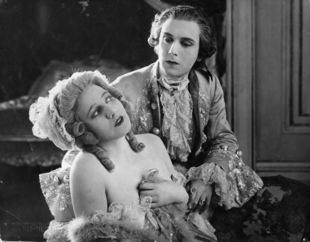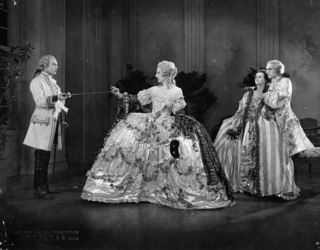DER ROSENKAVALIER

Ausria (1925)
Director: Robert Wiene
Music: Richard Strauss 1911/1925, (arranged by Bernd Thewes, adapted for performance by Frank Strobel 2006)
In terms of multimedia versions of popular operas, the Rosenkavalier film was among the first to appear. Although relying to a great extent on the audience’s familiarity with the opera itself, the film functions well as a self-contained comedy.
Analogous to the opera’s three acts, the film’s narrative consists of three main units. These are interspersed with war scenes portraying the world as lived in by the Marshall (though the latter does not actually appear in the opera). In the film, his character takes on an active role, resolving the amorous twists and turns at the end of the film which, in the opera, are left unresolved.
When the opera was adapted as an instrumental version by Richard Strauss and his collaborators, the vocal parts were taken out and partially replaced by individual instruments. The opera was shortened, in some places the course of events was changed and new narrative elements were added.
MUSIC: The music employed to accompany the portrayal of the Marshall’s world was taken from Richard Strauss’ extensive oeuvre. Several marches and dances from Strauss’ repertoire were selected for the film and new ones were also composed.
In Wiene’s film, which some consider to be too conventional, the cinematic imagery is just one element within the overall concept. The other is the music, whose interaction with the film is lending it a formidable narrative power.
In the Rosenkavalier film, the typical approach to film music composition, whereby the music is written subsequent to the film and functionally adapted to it, is turned on its head: The film’s central element is the music played by the orchestra as opposed to the libretto. The music is served by the film along with its new episodes and is also consistently referred to by the choreography of the actors. This is not surprising since the film was shot after the music.
For a long time, the film and the accompanying score for large orchestra had not been performed due to synchronisation problems and the loss of the last reel.
80 years after the film’s premiere, the restored film and music version with the reconstructed ending, which had been commissioned by ZDF/ARTE, was performed in Dresden in 2006 as a co-production by Filmarchiv Austria, Sächsische Staatsoper Dresden and ZDF/ARTE as well as 3sat and Digitaler Theaterkanal. The music, which had been restored by Bernd Thewes, was performed by the Sächsische Staatskapelle conducted by Frank Strobel who was, inter alia, responsible for the synchronisation of this exceptional film concert project.

THE STORY: The first 70 minutes of the film closely follow first two acts of the opera: Young Count Octavian has an affair with the Field Marshall’s wife. When her nephew, Baron Ochs, pays a courtesy visit, the affair is nearly discovered. Octavian escapes disguised as a chambermaid, albeit not without being observed by the two schemers Annina and Valzacchi. Octavian is sent to Sophie, the daughter of the recently ennobled Faninal, as Ochs’ matchmaker (Rosenkavalier, the Knight of the Rose) and falls in love with the girl. Although Sophie reciprocates, Ochs insists that the marriage contract should be fulfilled.
The Marshall’s wife hears about Octavian’s new-found love. To find out what is going on, she organises a masked ball; meanwhile, in Vienna, the jealous Marshall approaches his wife. The recently reconstructed final act reveals a happy ending, albeit not without a dash of irony – part comedy of mistaken identity, part melancholy swan-song lamenting the transient nature of love: Ochs is discredited by Octavian who once again disguises himself and lures Ochs to a rendezvous that ends in public scandal. The happy ending is brought about by Annina. She creates further confusion by swapping the costumes of the bewildered main characters until, all of a sudden, the right couples find each other. Ochs alone loses out. Burdened with debts, he returns empty-handed to his castle.
INSTRUMENTATION: 2+1/pic.2+1/ca.3+bcl/bthn.2+1/cbn - 4.3.3.1 - timp.3perc. pno/cel.hmn/hpd.2hp - strings (16 .16.12.10.8)
This is a production by the EUROPÄISCHE FILMPHILHARMONIE.
Contact: Ekkehard Jung
Phone +49 (0) 30 27890190
e-mail: welcome@filmphilharmonie.de
